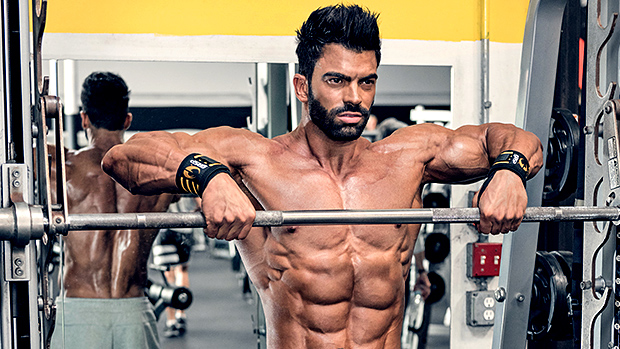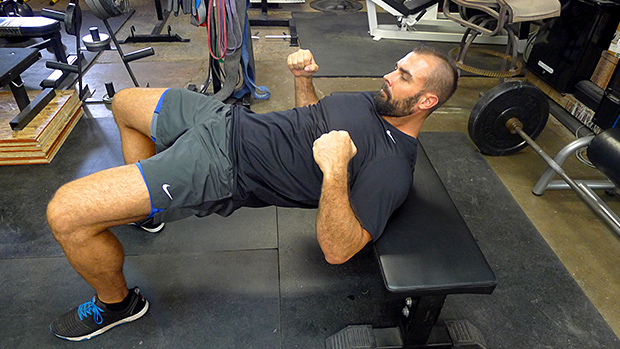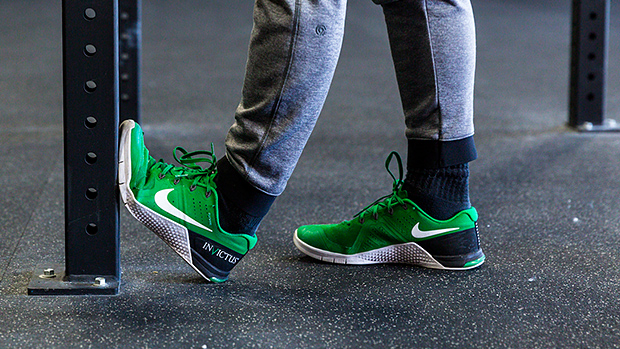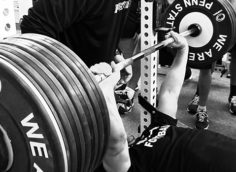Why The Smith Machine Gets So Much Crap
No piece of equipment has taken more abuse from strength coaches and the functional training crowd than the poor Smith machine. Their argument? They say it takes the stabilizers out of the movement.
And? What if that's exactly what you want to do for certain types of hypertrophy training? What if you have an injury where trying to stabilize yourself exacerbates the problem? You still need to train. Wouldn't something that takes that part out be useful while you're rehabbing?
Or what if you don't care about stability because your goal for that aspect of your training is to focus all of the tension directly onto a muscle group without bringing the secondary and tertiary movers into play?
Here's what else they say: "The Smith Machine locks you into the movement path and doesn't allow for a natural curve during the execution of the exercise."
Okay fine, but you could say this about virtually every machine ever made. They have a set curve that can't be changed during the range of motion. Yet plenty of lifters – top bodybuilders, powerlifters, strongman competitors, and athletes – use machines to get bigger and stronger.
The leg press is just a sled that moves up and down. People don't generally poo-poo on the leg press as a great quad-building movement. So their gripe doesn't make sense, unless they hate all exercise machines, which is pretty dumb too. Sorry, CrossFit.
Think of equipment the way you might think of dogs and their owners. There's no such thing as a bad breed of dog, only a bad owner or a bad fit. Likewise, there's no such thing as a bad piece of equipment – just bad technique, a bad fit for your needs, or your inability to use it right.
The Smith machine isn't some wacky contraption that puts you into abnormal positions. So stop demonizing it. Just because YOU don't use it for muscle growth and strength doesn't mean it can't make muscles grow or get lifters stronger. It can and it does.
Here's how to use the Smith machine to do exactly that. You may even discover that the Smith comes with a few advantages over free weights.
With the standard front squat, the rhomboids are the weak link. Once the rhomboids become fatigued, or if they're too weak to hold a heavy barbell in the rack position, the bar will come forward (the rack position is lost) and the set is basically over.
Sure, the barbell front squat is one of the best movements in regards to athletic application. It has a great transition from weight-room strength to "on the field" ability. But if we're talking about focusing on just hitting the quads for size gains, then having that weak link makes it inferior to the Smith front squat. That weak link is eliminated with the Smith machine.
It's far easier to hold the bar in the rack position with a Smith machine than with the barbell. Multi-time strongman winner Jouko Ahola uses the Smith machine for his front squats during training.
The other advantage here is that you can do high reps. Doing a set of 20 with the barbell front squat means the upper back is going to tire out long before the quads. With the Smith, this isn't an issue. You can get the bar squeezed in very close, raise the elbows high enough to hold it there, and focus on what the quads are doing instead of focusing on holding the bar.
Want bigger wheels? For someone with puny quads or poor leverages, the Smith machine is a plus. A lifter with long femurs and a short torso, who tends to bend over and has a lot of hip hinge in his squat, won't be able to effectively target the quads because the hips will end up having to generate the most amount of force to overcome the applying resistance.
With the Smith machine, you can place your feet in front of you, which allows you to stay upright in the squat with a lot of knee flexion. That means the quads will do the brunt of the work. Take a look down at your quads. Do they need work? (Yes, yes they do.)
Sitting down and doing an overhead press in the Smith machine will take the lower back out of the equation, allowing you to concentrate only on the shoulders. Yes, it builds muscle and gets you jacked, and even strongmen competitors use it.
Granted, in competition they stand when doing their events, but strongmen already do a lot of movements that hit the spinal erectors, like various deadlifts and stone loading. Since that muscle group tends to have the longest recovery curve compared to others, giving the low back a break and not asking it to stabilize the torso during the press means the shoulders can be worked more often without beating up the erector spinae.
Zydrunas Savickas, also known as "Big Z", is a four-time World's Strongest Man champion and eight-time Arnold Classic strongman champion. He does high-incline Smith machine presses and says it's his favorite movement for shoulders. Many people were baffled. How could a man, possibly one of the strongest human beings of all time, be using the Smith machine? People asked him why. His answer was simple: "It's the best machine in the gym for shoulders. It's the best exercise."
Don't think that all pressing has to be done standing to build the shoulders. And unless you're doing it wrong, your shoulders will be worked. Again, we're talking about building and strengthening a muscle so spare me the "but that doesn't transfer over to whole body strength" argument. Funny how most dudes who say that are on the scrawny side.
Also, there are some pressing stations for barbells that make getting the barbell off the rack quite awkward and difficult. With the Smith, you just unrack it and go to work. No fuss, no hassle, bigger shoulders.

This was a favorite of seven-time Mr. Olympia Lee Haney. He used a barbell, but for this particular movement, the Smith machine beats the brakes off its barbell counterpart in every way.
The benefit of the Smith is that you can actually lean forward a little without having to worry about stability, then squeeze exceptionally hard at the top. With a barbell you have the bar right over your butt, which is distracting.
Set the Smith bar at the bottom on the safety pins, lean forward so that the bar clears your donk without problem, and then squeeze the entire upper back as hard as possible at the top of the movement. You can even bend slightly at the elbows to further the contraction in the upper back.
No need to go excessively heavy here. Don't try and impress everyone with 19 plates on each side while you move your head back and forth with your traps doing basically nothing.

Here's another shrug variation since traps are the new abs. With this one you can concentrate on squeezing one side at a time while getting a much better stretch in the traps than you would with the barbell.
Grab one of the uprights of the Smith machine and allow your upper back to slightly round to fully stretch the traps and upper back. Maintain a neutral low back position. Then do it again, squeezing the traps in a deliberate motion and hold at the top. These are great for medium to high reps. The best part is, you can do them after the behind the back movement. Just take off a few plates and continue building big traps. Magic.

Normally, people do these with a rear leg on the bench, which can be done here as well. But you may find the reverse lunge version makes your glutes scream even louder.
Simply take a big step back, lock yourself into that position, and basically do a one-legged squat. To keep the tension on the glutes, only come back up about three-fourths of the way. If you want to make things even more fun, once you get close to failure, hold that three-fourths position at the top until you can basically no longer stand. You'll be kicked off of Team Pancake Ass in no time.

The reverse-grip bench press is mostly used for triceps. Getting the bar out of the rack without a handoff and the torque on the wrists makes the free-weight barbell version feel kinda shitty.
When you use the Smith machine for these, you can turn your wrists out more than you could with the barbell, eliminating the stress on them that the barbell version creates. And also since you're not trying to stabilize the bar the entire time, you can load up the triceps with this version far better than you can with the barbell.
Try bringing it down about 2-3 inches from touching the chest. This will also overloaded your triceps much better than the full range of motion version. Again, score one for the Smith machine.
There's no reason to marry yourself to a barbell and exclude everything else because you've swallowed the dogma of a machine-hating coach. If you use it right, the Smith machine can make you stronger and bigger than those dogmatic coaches. Be flexible, open your mind to other possibilities, and actually experiment with stuff outside the barbell... or box.





